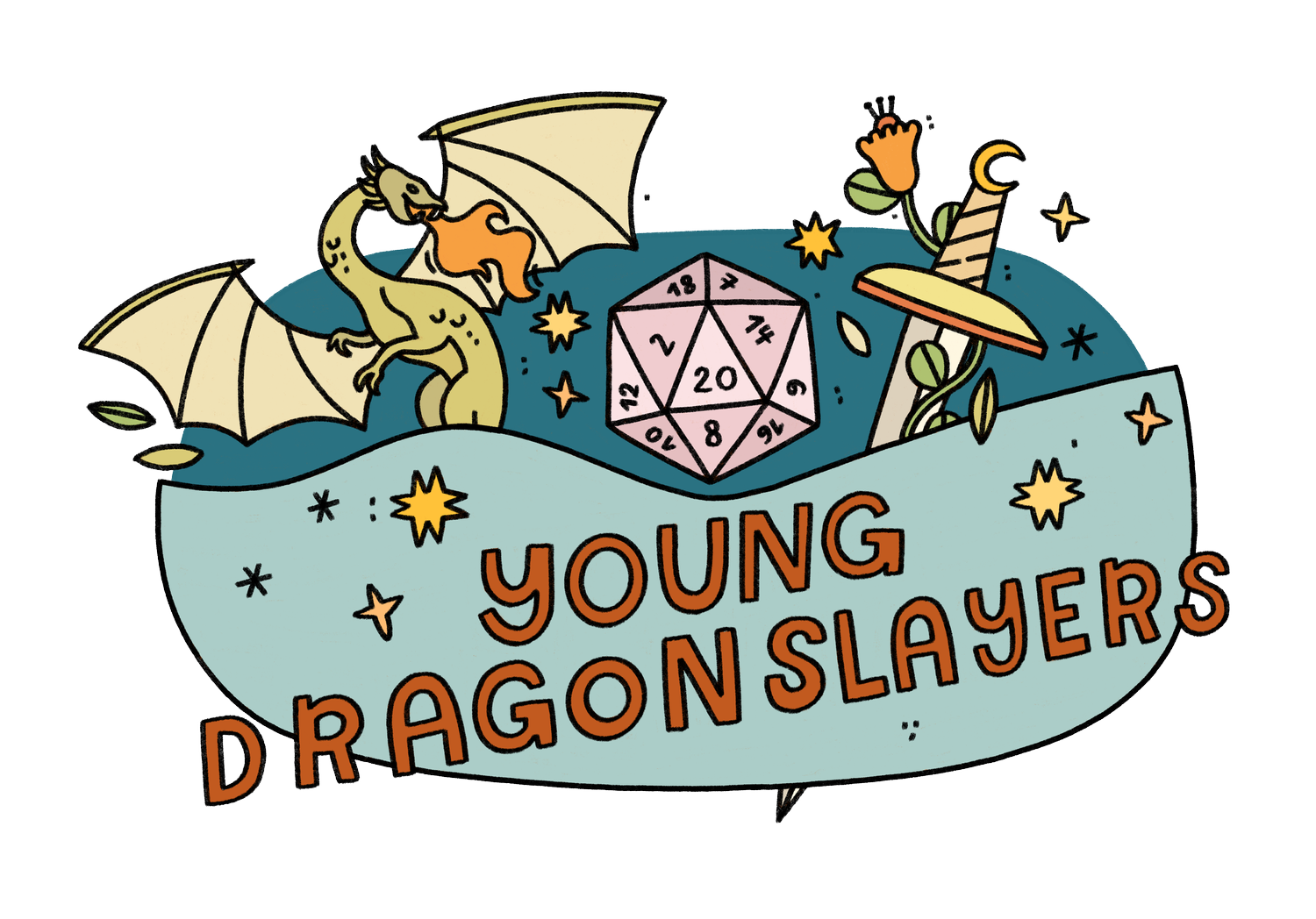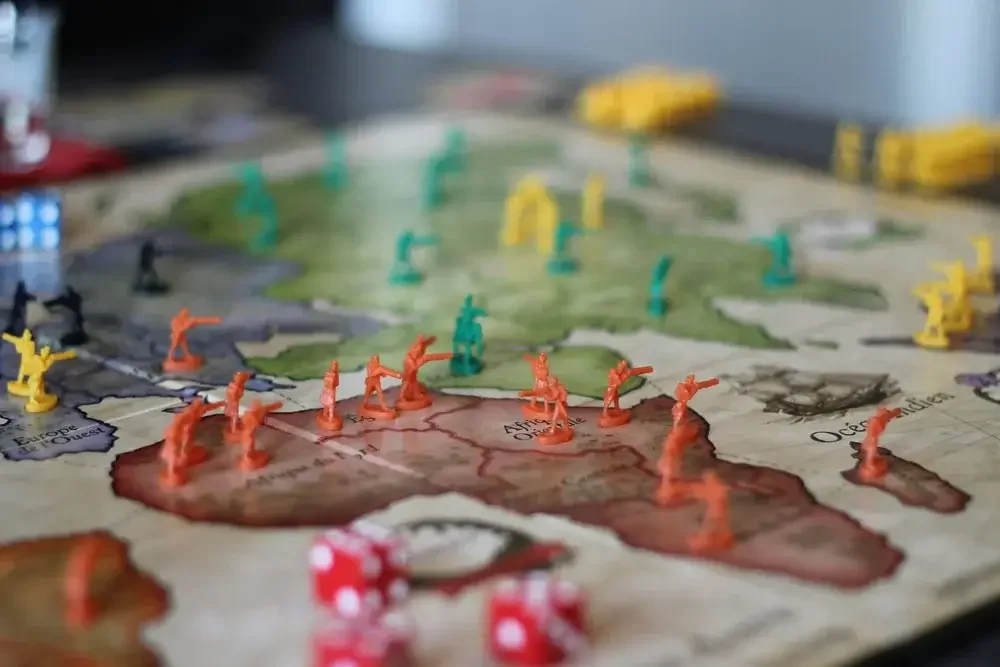How To Run Better Combat in DND, Pathfinder, and More!
The most complicated part of Dungeons and Dragons by far is the combat. Learning how D&D combat works is a task all on its own, not to mention building an interesting D&D encounter, and how to run combat as a Dungeon Master. But making combat engaging, compelling, and, most of all, fun, is a great way to level up your DMing and run D&D 5e combat your players won’t soon forget! We’re professional Dungeon Masters here at Young Dragonslayers, so we’ve run our fair share of D&D combat encounters and have learned a few tips, tricks, and best practices to run D&D combat online and off. But these ideas aren’t limited to Dungeons and Dragons – they apply to other combat-oriented tabletop roleplaying games like Lancer, Mutants & Masterminds, Shadowrun, Starfinder, and more! So roll for initiative (or your turn-choosing system of choice) and get ready to run an awesome session of combat.
DM Combat Tip: Consider Character Motivations
All good Dungeon Masters know that character motivations are the key to crafting a compelling campaign. After all, a party’s hardly going to embark on a quest they have no reason to complete! Sometimes, this can be straightforward; PCs will get a bounty of gold if they defeat the monster terrorizing the village. Sometimes, it can be more complex or personal; the PCs wish to defend the innocent villagers. Sometimes, it can have multiple layers; one PC wants to prove their worth in combat, while another wants to become the leader of the village and another wants to protect their family. But enemy combatants have motivations, too. They might be hungry for power and wealth, bent on revenge for past wrongs, or desperate to get a particular magical item. Not all motivations have to come from a place of destruction or evil. A combatant might be mind-controlled, coerced, or manipulated into fighting the party. They might be a force of nature or chaos. They might be seeking a MacGuffin for benevolent purposes, like healing a loved one. Or they might even be on their own journey to prove themselves! Building from interesting character motivations can tie a combat encounter to your story, compel your players to get involved, and craft an interesting enemy for them to battle.
Running D&D Combat with Flavor
Another key component of any D&D campaign is flavor: the spice that makes the story come alive. It’s the little details – character quirks, colorful descriptions, and worldbuilding – that come together to create a story that feels interesting and real (even if it’s about spaceships or superheroes). Sure, “You hack into their visors, and now they can’t see.” gets the point across. But “You hunch over, fingers flying across the keyboard. You’re in. You turn off each and every sensor in their visors, leaving them totally blinded. You see a few of them turn their heads, confused. One veers wildly out of control and crashes their hover-bike into the side of a building. You did it!” feels way cooler. Sticking with the mechanics as they’re written is sensible, like having the boss mecha use the giant welding torch from their inventory to melt the players’ armor. But you could also keep the same dice rolls but swap out the description, like having the Big Bad grab a floating spaceship and activate its thrusters instead of using its own torch! Having your players face a supervillain with metal-bending powers is neat. But what if they summoned a blockade of cards, pulled together clockwork minions to fight for them, or built an impromptu suit of scrap-metal armor that lets them float through the air? Having fun with the details and descriptions can really bring your combat to life and it encourages your players to do the same, which is one of the best parts of the game.
How to DM Combat That Requires Strategy
Once you’ve got your players invested in the story and the scene, they’ll be ready to fight, engaging with the strategy of the game. Using your imagination and the existing mechanics of your game, build a combat encounter that will motivate your players to think strategically rather than letting them just…roll a bunch of dice and watch a pool of hit points deplete. Instead of having one monstrous alien worm emerge from the ground, you could have it periodically spit up smaller aliens while hiding in its hole, forcing the players to decide between taking out each and every little guy (which would slowly deplete their reserves before facing the big challenge, but give them time to recover and regroup), or tracking down the source (which would throw them into a fight with a lot of enemies at once, but potentially stop the worm before it fully empties its belly). Instead of equipping a mech with a big space-gun that deals consistent damage, you could give it a massively powerful laser beam that needs to recharge between uses. This gives your players a chance to work out a plan: spread out to minimize the damage it can do, have one lancer serve as a distraction while the others try to disable the beam, or hide behind asteroids, making the laser miss so they can fly in safely. As a Game Master, it helps to find enemies with interesting strengths and weaknesses (and switch it up from battle to battle). Giving your players a strategic fight will keep them engaged – and make them feel great when they finally emerge victorious!
How to DM Combat Using The Environment
Part of making a strategic battle is utilizing the environment where it takes place. Just like it’s boring to fight a big pile of hit points that occasionally does damage, it’s boring to fight in a vague open field without terrain, obstacles, or hazards. Place your battles in a variety of settings – claustrophobic and expansive, craggy and flat, indoors and outdoors. If they’re facing down a corporate hitman who’s ducked into the company’s lab, add glass canisters of dangerous specimens, fragile machinery that can explode, and winding corridors between testing rooms with a different surprise in each one. If they’ve ambushed a frost witch, have her rise up on a column of ice to put distance between her and the melee fighters, create ice shields to block projectiles, and spheres of bitter cold the player characters must maneuver around to avoid taking damage. Creating an interesting environment for your PCs to fight in will present unique challenges, give them chances to think creatively, and keep each battle distinct and engaging!
Running D&D Combat with Surprises
Some of the most memorable moments in any story are the ones that take the audience by surprise. This is even more true in an interactive story, like the ones in a tabletop RPG. Throwing in a plot twist for the sake of a plot twist won’t get you very far, but thinking deliberately about what might catch your players off guard, throwing out hints to foreshadow a future moment, and hitting them with a change right when they’ve gotten comfortable can create a twist they’ll be talking about for years to come. Maybe the hoverbike-riding assassin that’s been stalking the party the whole campaign removes their helmet to reveal that she’s the long-lost sister they’ve been trying to rescue. Or perhaps the party thinks they’ve cornered an evil inventor with a bag of mechanical tricks only to realize he’s been stalling to buy time for his clockwork dragon to reach full charge (a classic two-phase boss battle). Play with your party’s expectations to keep them on their toes and bring about a revelation they won’t soon forget.
DM and Player Resources For Combat And More
We hope that these five elements – motivation, flavor, strategy, environment, and surprise – will be helpful tools for you to run combat in D&D 5e, Pathfinder, Shadowrun, and more. If you’re a Dungeon Master looking for the perfect enemy for your players to fight, we’ve picked out statblocks for some neat mythology-inspired creatures and, if they’re ready to face a BBEG, 10 awesome dragons with some absolutely wild powers. If you want to DM but are nervous or unsure where to start, we recommend our Dragon Leaders program, an online course that guides you through the process of creating and running your own D&D games – and learning leadership skills that go beyond D&D. And if you’d like to play a few combat encounters as a player, we’ve got you covered there, too. We run online D&D games for tweens and teens that meet every week, setting up epic battles for you to test your skills and make some stories you won’t soon forget!






